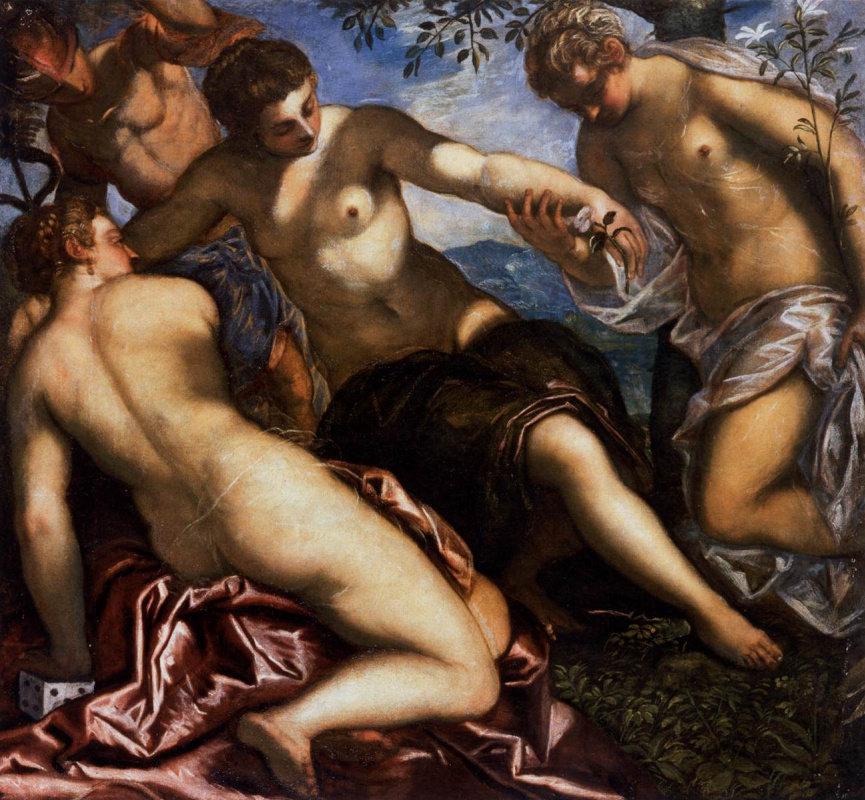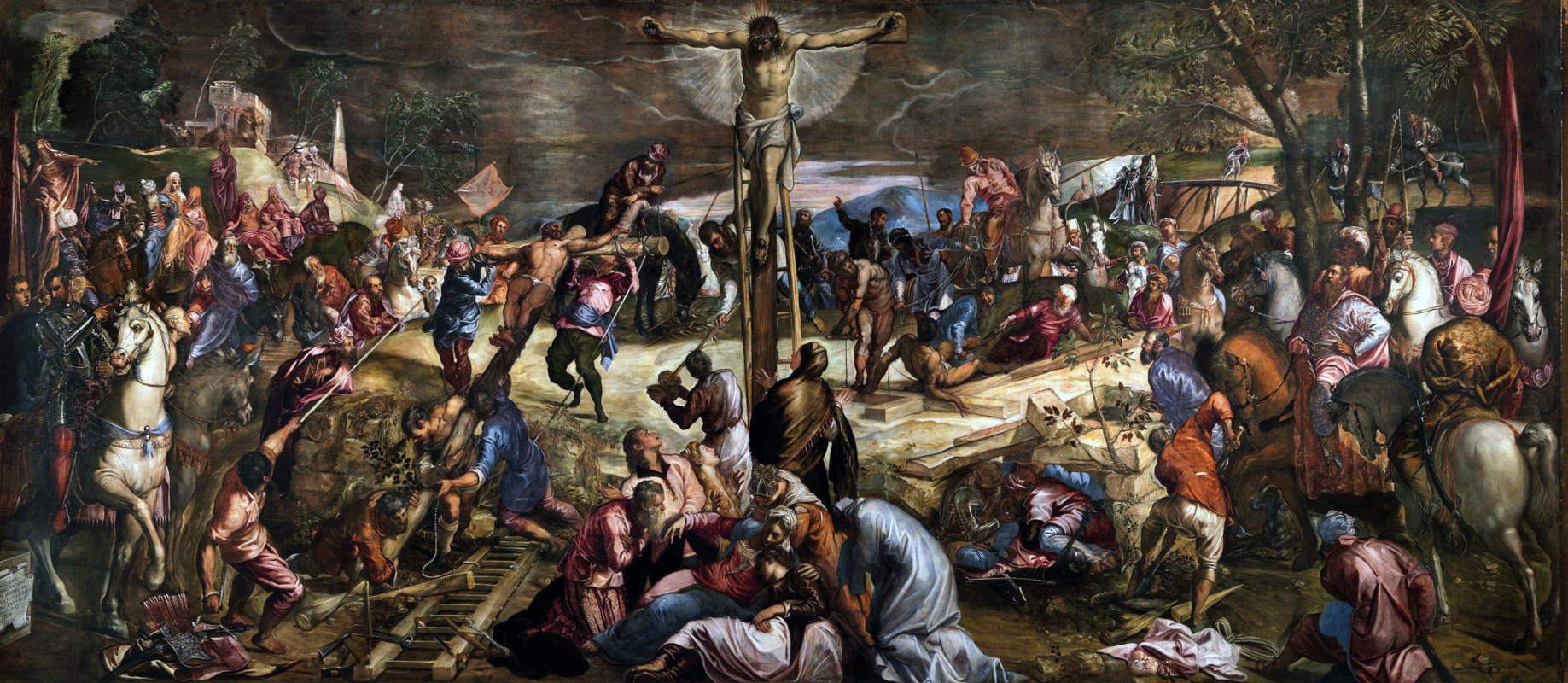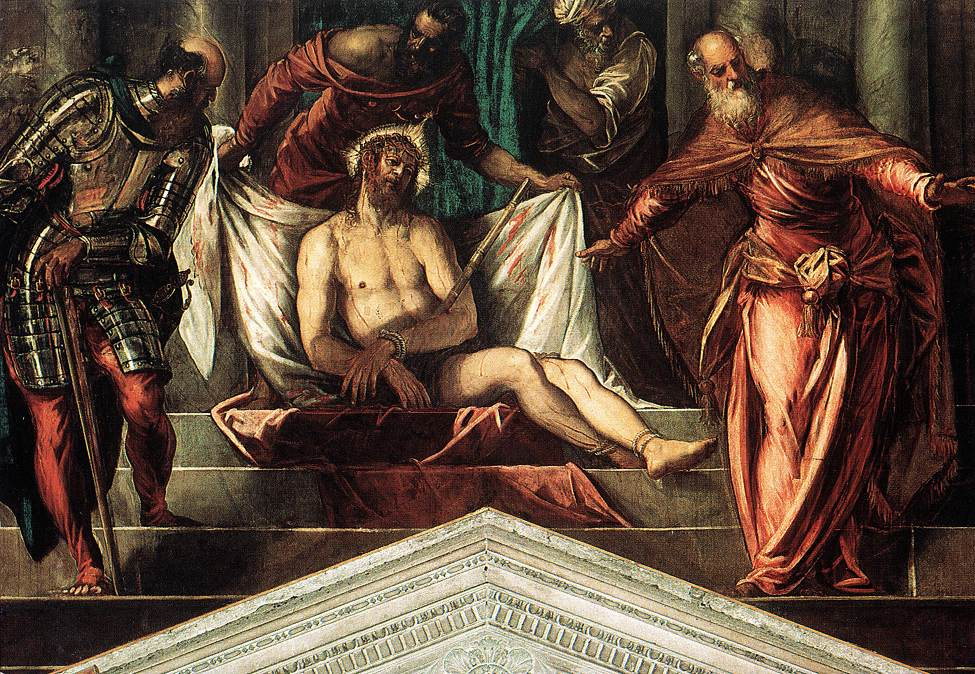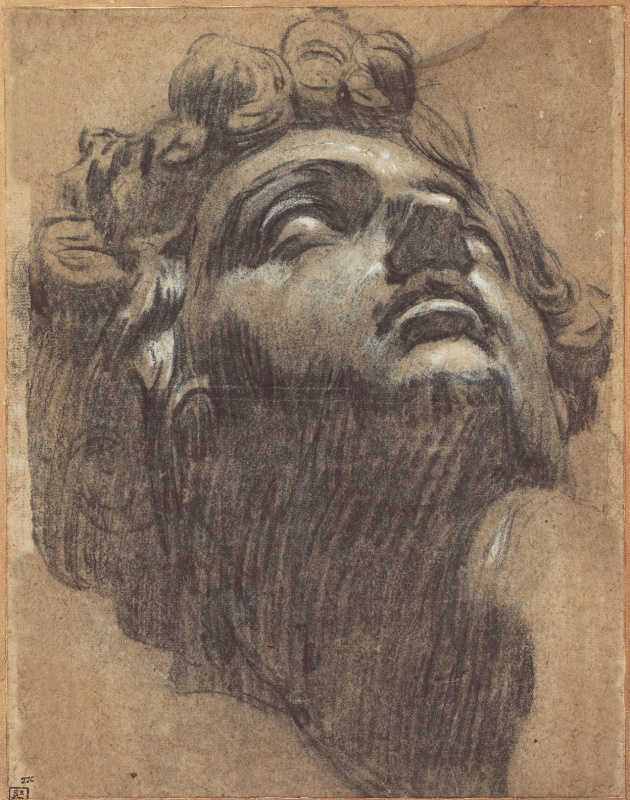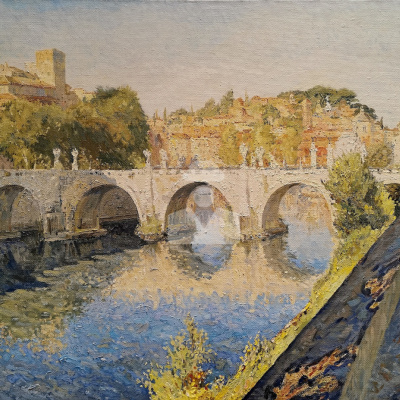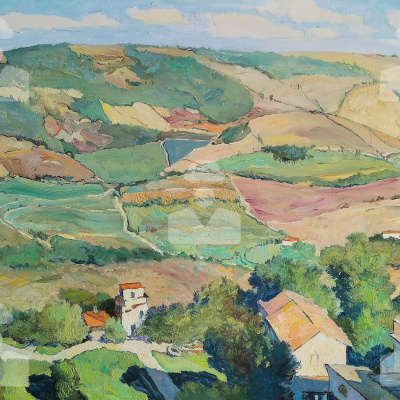

"Tintoretto. Birth of a genius"
Musée du Luxembourg, Paris, France
March 7-July 1, 2018
Hosted by France’s oldest museum the Musée du Luxembourg in Paris, the jubilee exhibition "Tintoretto. Birth of a genius" showcases the mesmerising early work of Jacopo Robusti who adopted nickname 'tintoretto' meaning 'the little dyer'.
Father of a young artist was a cloth-dyer, a common and respectable occupation in Renaissance Venice, so Jacopo has got artisan background since his childhood. Actually, a little is known of his artistic training. Some sources report that he was expelled from Titian’s workshop after a short period, as a result either of the jealousy or incomprehension of his master. The other consider that he was trained in the workshop of a lesser-known artist.
Tintoretto is often associated by experts with Mannerism , an artistic style from the late Renaissance that makes use of strongly dramatic subjects and depicts human figures in exaggerated proportions and poses. However, Tintoretto’s individualistic style sets him apart from that movement: although he sacrifices harmony for the bedlam of drama, his scenes are glued by the symmetry. In his works, chaos is tempered by choreography, disorder by discipline.
The priceless loans from the world’s greatest museums were brought to Paris for the exhibition "Tintoretto. Birth of a genius", including works from Amsterdam, Budapest, London, Madrid, Milan, Rome, Venice, Washington and Vienna.
Art historians recognized two portraits of illustrious personages of the time in it: Titian in the group on the left, wrapped in a light-coloured cape, who is shown turning round; Michelangelo in the foreground, leaning over the book, and the self-portrait of Tintoretto himself, behind Titian, looking towards the spectators.
Gallerie dell’Accademia, Venice, Italy
7 September 2018−6 January 2019
The Gallerie dell’Accademia will continue to display the "young Tintoretto", with reference, in particular, to the decade from 1538 to 1548. This period is highlighted by one of the key works of the artist’s youth — "The miracle of the slave", with its extraordinary colors, chiaroscuro contrasts and complex figural composition.
Even though art historians describe Tintoretto as a Mannerist for his obsession with style and technique in figural compositions, the artist’s striving for effect in this picture is less in the cause of stylishness and more for the sake of narrative drama.
Palazzo Ducale, Venice, Italy National Gallery of Art, Washington, USA
7 September 2018−6 January 2019 3 March 2019−30 June 2019
"Tintoretto: The Artist of Venice at 500" will open first at the Palazzo Ducale, Venice, beginning in September 2018, and then will travel to the National Gallery of Art in Washington in the spring of 2019, showcasing nearly 50 paintings and more than a dozen drawings spanning the artist’s entire career. It will be the first retrospective of the artist in North America.
The rich selection of domestic and international loans ranging from regal portraits of Venetian aristocracy to religious, mythological, and historical narrative scenes will present Tintoretto as one of the "Big Three" 16th-century Venetian painters alongside Titian and Paolo Veronese. Exploring the artist’s working methods, the exhibition curators — experts Robert Echols, independent scholar, and Frederick Ilchman, chair of the Art of Europe department and Mrs. Russell W. Baker, Curator of Paintings at the Museum of Fine Arts from Boston — will separate art works by Tintoretto from those painted by his assistants and followers frequently misattributed to the master.
Thanks to Robert Echols and Frederick Ilchman art lovers will get new and more accurate understanding of Tintoretto’s oeuvre and chronology. In 2018, a fully illustrated exhibition catalog will be published in English and Italian with a range of essays by the curators and other leading scholars as well as new research and scientific studies of Tintoretto’s work.
Along with 11 other canvases, these four paintings have now been restored by the US conservation charity Save Venice in preparation for the forthcoming exhibitions and returned to their original chromatic brightness. To mark the 500th anniversary year, the organisation is also publishing a leaflet detailing all the Venetian churches that contain works by Tintoretto.
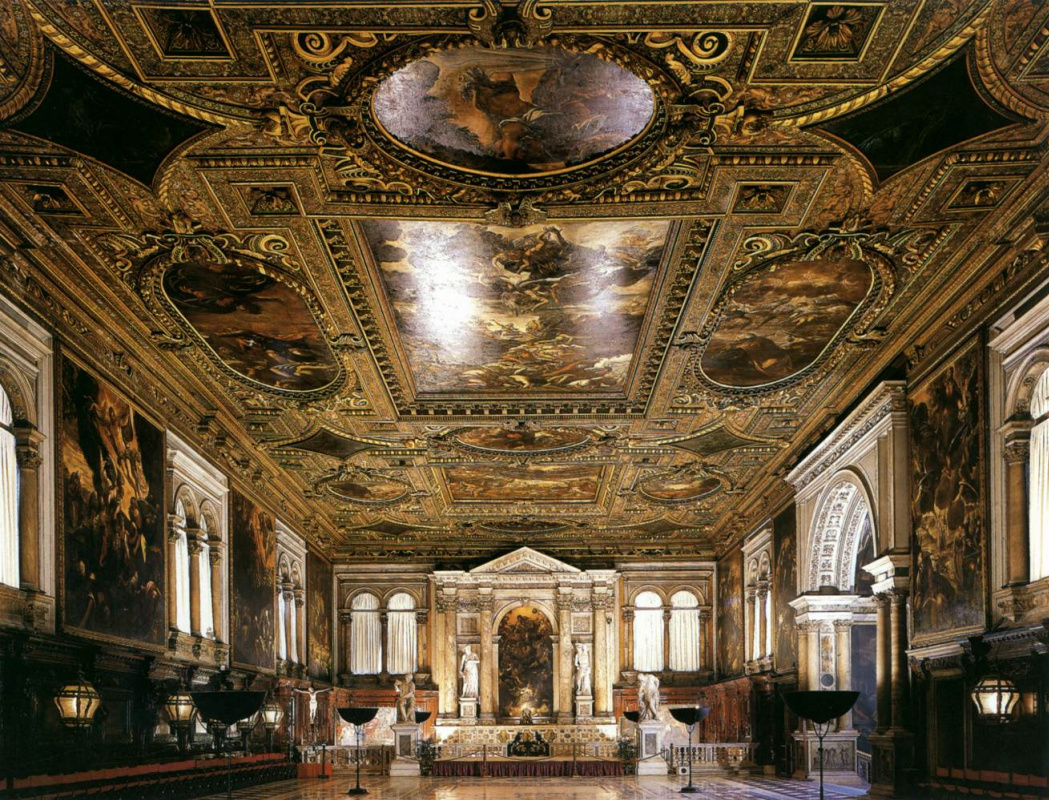
Still the illusion of spontaneity persists in Tintoretto’s art. When English thinker John Ruskin visited the Scuola Grande di San Rocco, his verdict was: "I don’t believe it took him ten minutes to invent and paint a whole length. Away he goes, heaping host on host, multitudes that no man can number—never pausing, never repeating himself—clouds and whirlwinds and fire and infinity of earth and sea."
Palazzo Ducale, Venice, Italy
10 March 2018−10 June 2018
Ruskin was conquered by the beauty of Venice and amazed by Tintoretto’s paintings. He wrote his famous book "The Stones of Venice" which contributed much to create the myth of the city and to revive Tintoretto’s fame. Although the artist was admired and sought after during his lifetime, he was relegated by scholars among the less important painters. However, Ruskin wrote about him with such a great admiration that made him known all over the world, especially in the Anglo Saxon countries.
To express gratitude to the great scholar and critic Ruskin, the Scuola Grande di San Rocco together with the Fondazione Musei Civici di Venezia and the Guild of St George in the UK, decided to begin the celebration of two anniversaries — the quincentenary of Jacopo Tintoretto’s birth (1518/19) and the bicentenary of John Ruskin’s (1819) — a year early in 2018. The first to be remembered is John Ruskin.
The Morgan Library & Museum, New York National Gallery of Art, Washington
October 12, 2018-January 6, 2019 March 3-May 26, 2019
"Drawing in Tintoretto’s Venice" will be the first exhibition to focus specifically on Tintoretto’s work as a draftsman. Providing new ideas about his evolution in drawing, the show will disclose new information about the dating and function of the so-called "sculpture drawings," and define Tintoretto’s place in the Venetian tradition.
Drawings by Tintoretto’s predecessors and contemporaries, including Titian, Veronese, and Jacopo Bassano, will provide the Renaissance context he worked in to show his sources and define his individuality. Tintoretto’s distinctive figure drawings are the heart of the show, which includes both preparatory drawings and his studies of heads and entire figures after sculptures by Michelangelo and other famous sculptors of his day.
The exhibition "Drawing in Tintoretto’s Venice" also considers artists whose drawing style was influenced by Tintoretto’s, particularly his son Domenico Tintoretto and Palma Giovane. Also there will be the work of the young El Greco, dating from his time in Venice, proposed recently as connected with Tintoretto and his followers.
National Gallery of Art, Washington
March 3-May 26, 2019
To complete the panorama of Venetian art in the time of Tintoretto, National Gallery of Art in Washington, DC will mount an exhibition presenting some 40 prints from the second half of the 16th century, ranging from the exquisite etchings of Parmigianino and his immediate followers, to the spectacular woodcuts of Giuseppe Scolari, most from the Gallery’s own collection. Serving as a critical source for Tintoretto’s artistic formation, they will reveal parallel developments toward a distinctively Venetian mannerism , and show striking graphic responses to the dynamism and expressiveness of Tintoretto’s style.
Titile illustration: Jacopo Tintoretto, Self-Portrait, c. 1588, oil on canvas, Musée du Louvre- Départment des Peintures.










